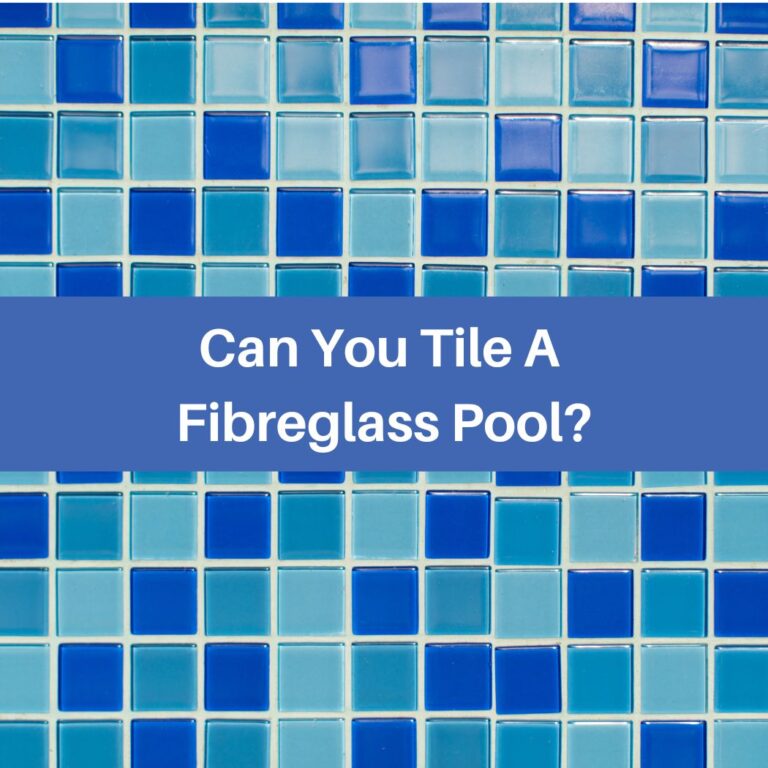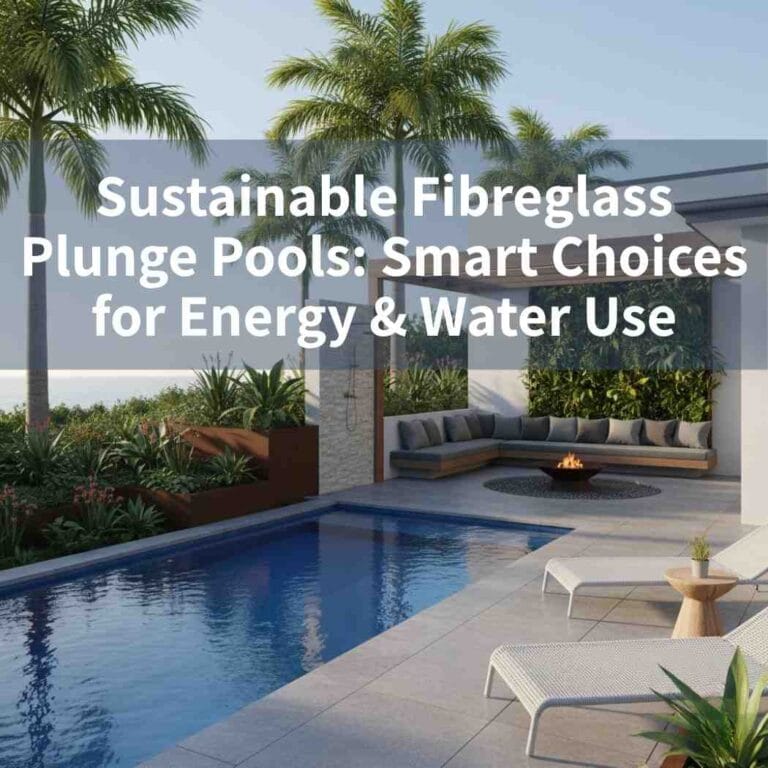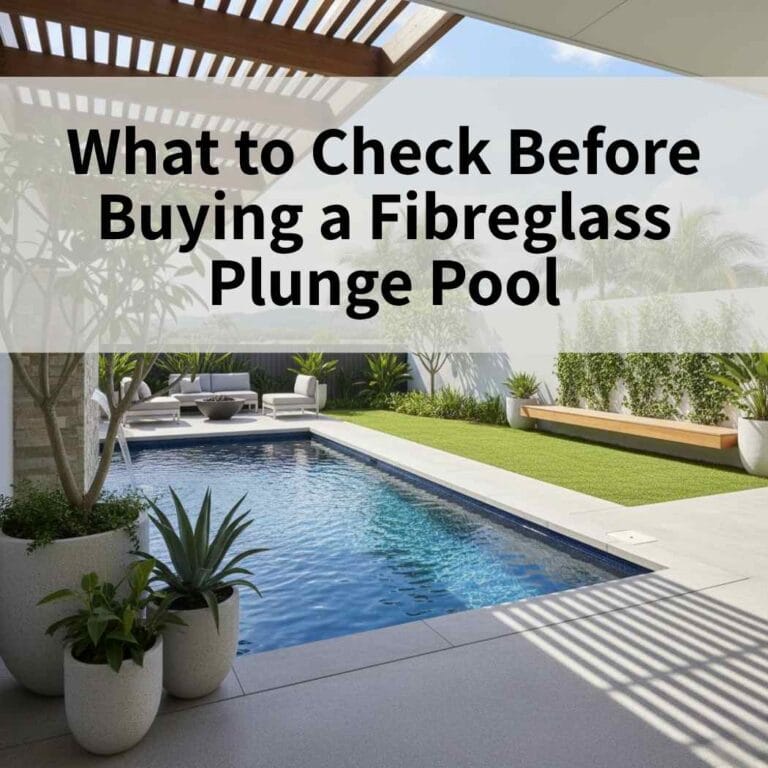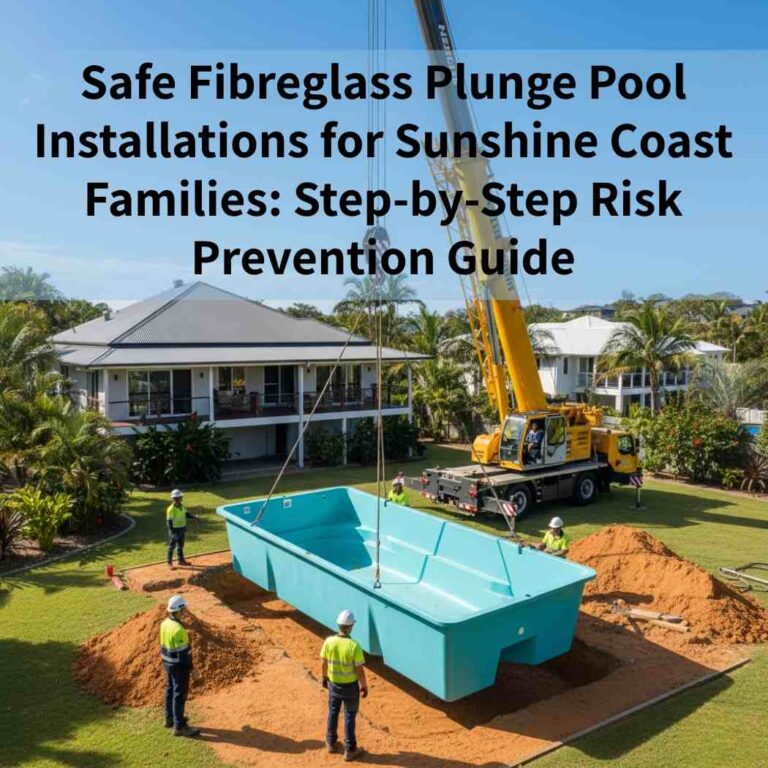When it comes to selecting an inground swimming pool, you might wonder about the pros and cons of each type. Should you choose a fibreglass pool or a vinyl liner pool?
As a trusted provider in the pool industry, Plunge Pools Sunshine Coast prides itself on delivering high-quality installations that not only meet your aesthetic desires but also stand the test of time. We specialise in fibreglass pools and are dedicated to ensuring your experience is seamless from start to finish, handling everything from council applications to the final installation of your new plunge pool.
In this article, we’ll provide a comprehensive comparison of the two pools, exploring key differences such as installation processes, customisation options, durability, maintenance, and more. By the end, you’ll have a clearer understanding of which pool type aligns best with your needs and lifestyle.
Table of Contents
ToggleThe Popular Inground Pool Options: Fibreglass VS Vinyl Liner Pools
Side by Side Comparison
| Features | Fibreglass Pools | Vinyl Pool |
| Installation Time | 3-7 days | 4-8 weeks |
| Initial Cost | $45,000+ | $45,000+ |
| Lifespan | 25-30 years | 5-10 years |
| Maintenance | Low (less frequent cleaning) | Moderate (more frequent maintenance to manage pool walls and water chemistry) |
| Customisation | Limited shapes due to pre-manufactured mould | Highly customisable |
| Durability | Very durable, no need for replacing or resurfacing | Less durable (liner can tear or fade) |
These differences show why many homeowners choose fibreglass pool installation for long-term performance and reduced maintenance costs.
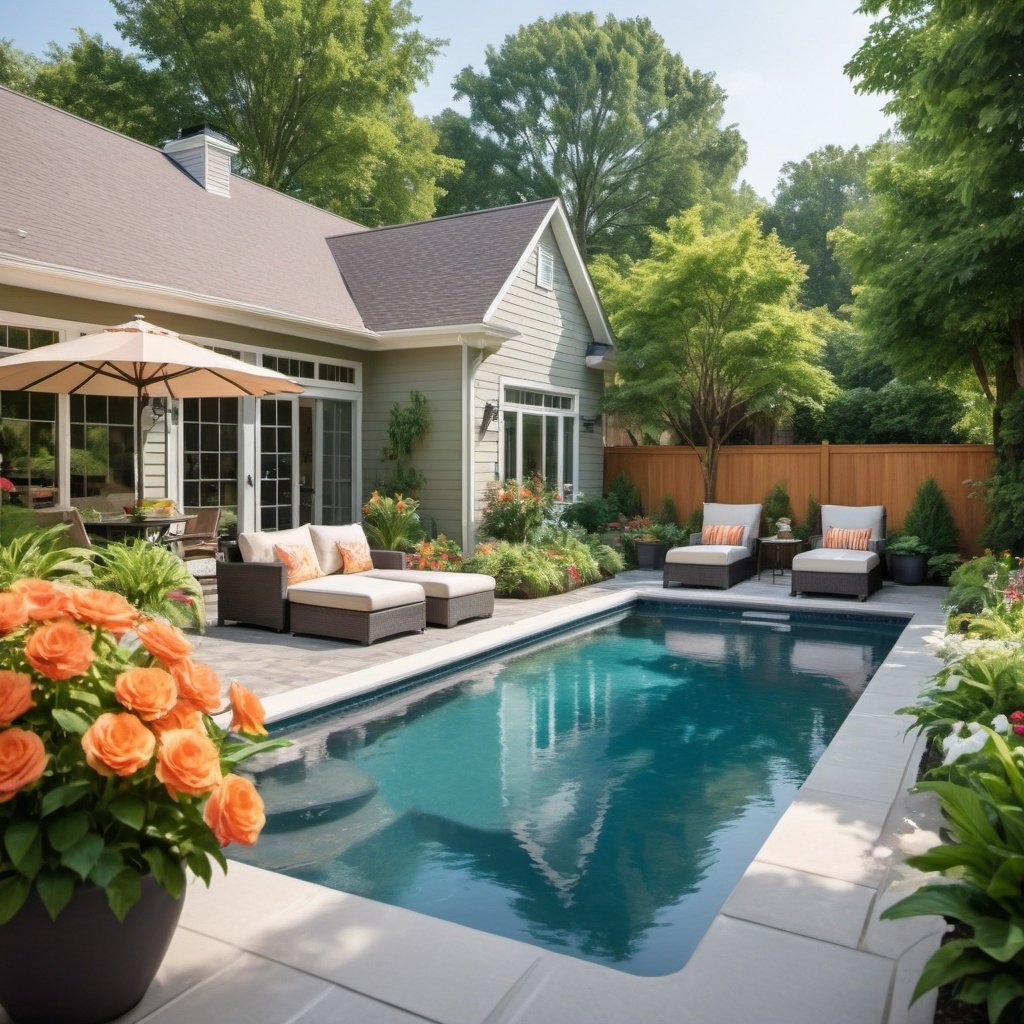
Material and Structure
Fibreglass Pools are made from a solid fibreglass shell that is pre-manufactured and delivered as a single piece, making them a durable choice built to last.
This construction method results in a smooth, non-porous surface that resists algae growth and makes maintenance easier. The shell is typically coated with a gel finish that provides a glossy appearance and enhances the longevity.
In contrast, a vinyl-liner pool has polymer wall panels or consists of a framework made from steel lined with a flexible vinyl sheet. When compared to each other, both have unique advantages. This design allows for a wide range of shapes and sizes, making vinyl pools highly customisable. However, they are susceptible to tears and fading over time, requiring replacement every 5 to 10 years.
If you prefer a pool surface that’s sleek, algae-resistant, and easy to maintain, schedule a consult with specialists in fibreglass pool design and installation today.
Aesthetic Appeal
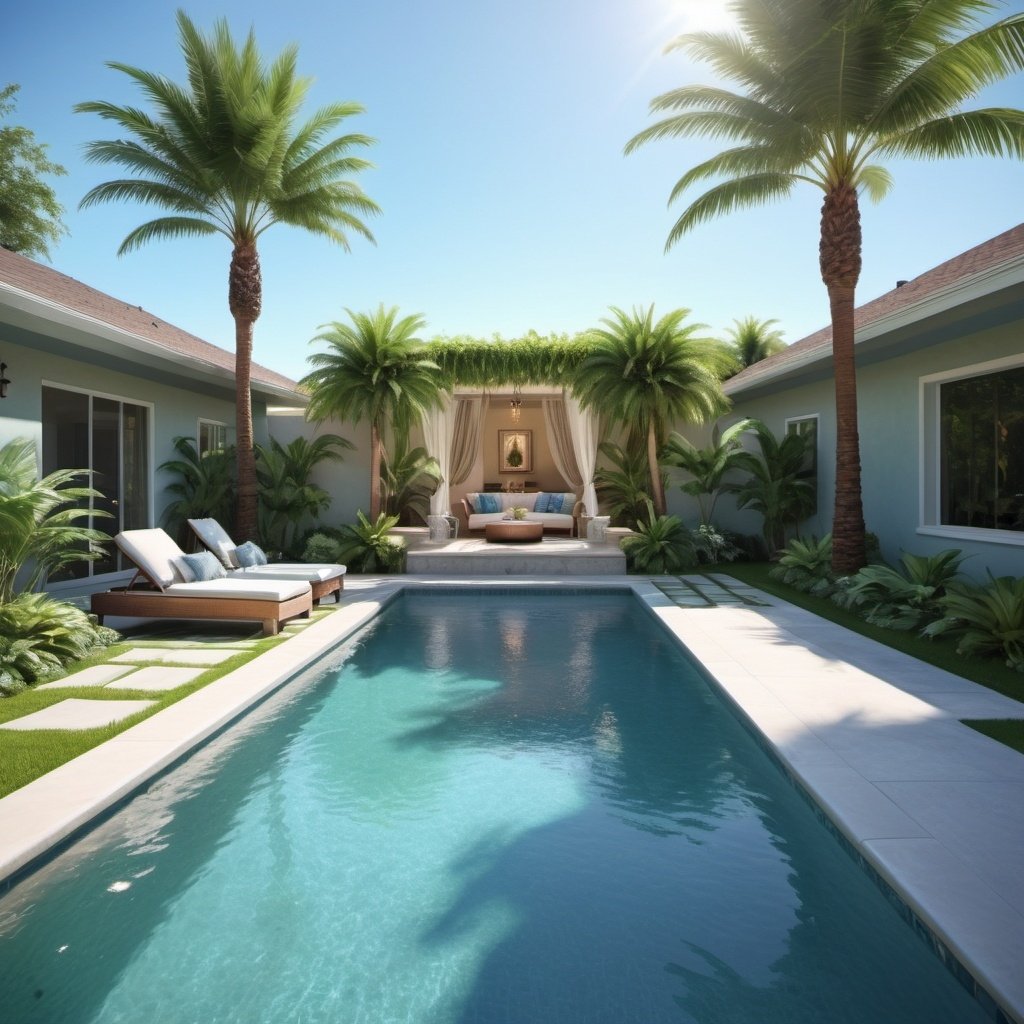
Fibreglass pools generally offer a sleek, modern look with a glossy finish. They come in various colours and styles, allowing homeowners to choose a design that complements their backyard. Vinyl pools, while also available in a range of colours and patterns, may not have the same premium appearance, especially as the liner ages.
Installation Time
The installation process for fibreglass pools is typically very quick and often completed within a few days to a week. The mould comes pre-manufactured and is delivered to the site, where a crane simply drops it into place.
In contrast, vinyl-liner pools are available in two primary types.
The first type is above-ground prefabricated vinyl-liner pools, which are often chosen for their lower upfront cost and their immediate installation. However, Australian pool safety regulations and fencing codes typically mandate that most above-ground pools are to be completely enclosed, which can increase the total cost.
The second type, in-ground vinyl-liner pools, is less common in Australia compared to fibreglass or concrete pools. However, they can be installed professionally and made operational within a similar time frame as the installation of a concrete pool (4-8 weeks).
Affordability of a Vinyl vs Fibreglass Pool
Initial Costs
Above-ground vinyl pools are cheaper upfront as they come pre-manufactured with installation costs starting at approximately $10,000 less. The in-ground version can be installed for a cost similar to that of a fibreglass pool. However, the initial savings can be offset by the need to replace the liner every 5 to 10 years, which can cost between $3,000 and $5,000 under the terms of the liner warranty.
Long-term Costs
Fibreglass pools, while more expensive initially (starting at $45,000+), tend to have lower lifetime costs thanks to their durability and minimal upkeep. Comparing fibreglass pool costs over the long term shows significant savings, since there’s no liner replacement every 5–10 years. Unlike vinyl liners, which often need replacing or repairing, fibreglass pools remain structurally sound and easier to maintain, making the overall cost of ownership lower over decades.
For transparent quotes and accurate budgeting, our fibreglass pool installation professionals break down every cost from excavation to equipment setup.
Fibreglass and Vinyl Pool Installation Process
Fibreglass Pool Installation
- Site Preparation is crucial when deciding between various in-ground pools; The area is excavated to fit the pool shell.
- Delivery and Placement: The shell is delivered and placed in the excavation.
- Backfilling: The area around the shell is backfilled with sand or gravel. This process is vital whether you opt for a fibreglass or vinyl liner pool.
- Plumbing and Electrical: Necessary plumbing and electrical connections are made, ensuring the new pool is fully operational.
- Finishing Touches: Decking and landscaping are completed.
For homeowners wanting a practical breakdown of timelines, machinery, and construction stages, explore our complete installation process guide.
Vinyl Liner Installation
- Site Preparation: Similar excavation is done to accommodate the pool structure, making it easier to remove the liner for repairs if needed.
- Framework Assembly: If your vinyl liner requires a water system, make sure to include it. Steel or polymer walls are assembled and secured.
- Liner Installation: It is crucial to drain the pool and remove any old liner carefully to prevent damage.
- Plumbing and Electrical: Connections are made for filtration and lighting. These features are critical whether you invest in a fibreglass or vinyl liner pool.
- Finishing Touches: Decking and landscaping are added. The base vinyl liner packages may include these elements for a complete look.
Customisation
Fibreglass Pools
Fibreglass pools offer some level of customisation but are generally limited to pre-designed moulds. Homeowners can still select from a variety of sizes and add features like built-in steps, benches, and jets to suit their needs. However, the overall shape is constrained by the available moulds, which may not fit every design vision. Even with fewer mould options, the durability and sleek finish explain why many homeowners choose fibreglass pools over vinyl, making them a practical and long-lasting choice.
Vinyl Liner Pools
They excel in customisation, allowing you to customise your pool to match your aesthetic preferences. Vinyl also has polymer wall panels, which add to its structural stability. The vinyl liners also come in a variety of colours and patterns, allowing for a personalised aesthetic. This flexibility can be particularly appealing for those looking to create a one-of-a-kind backyard oasis.
Smooth Surface
Fibreglass pools have a non-abrasive, smooth surface that is comfortable to the touch and has little to no algae growth, which is a significant advantage in this pool debate. This feature contributes to lower maintenance needs for each pool, making it easier to make a decision. Vinyl liners can feel smooth, but over time, they may develop rough spots or tears from dog claws, which can lead to algae buildup and require more frequent cleaning.
Potential for warping or cracking
Fibreglass pools are known for their durability and resistance to cracking. They contribute to the overall lifetime of the pool and reduce the need to replace the liner on schedule, as long as the liner is periodically checked. They can flex slightly, allowing them to withstand ground shifts without damage. Vinyl pools, however, can warp or tear, especially if the ground shifts or if the water level fluctuates significantly, which may require you to remove the liner for repairs. Regular maintenance is required to prevent such issues.
Durability
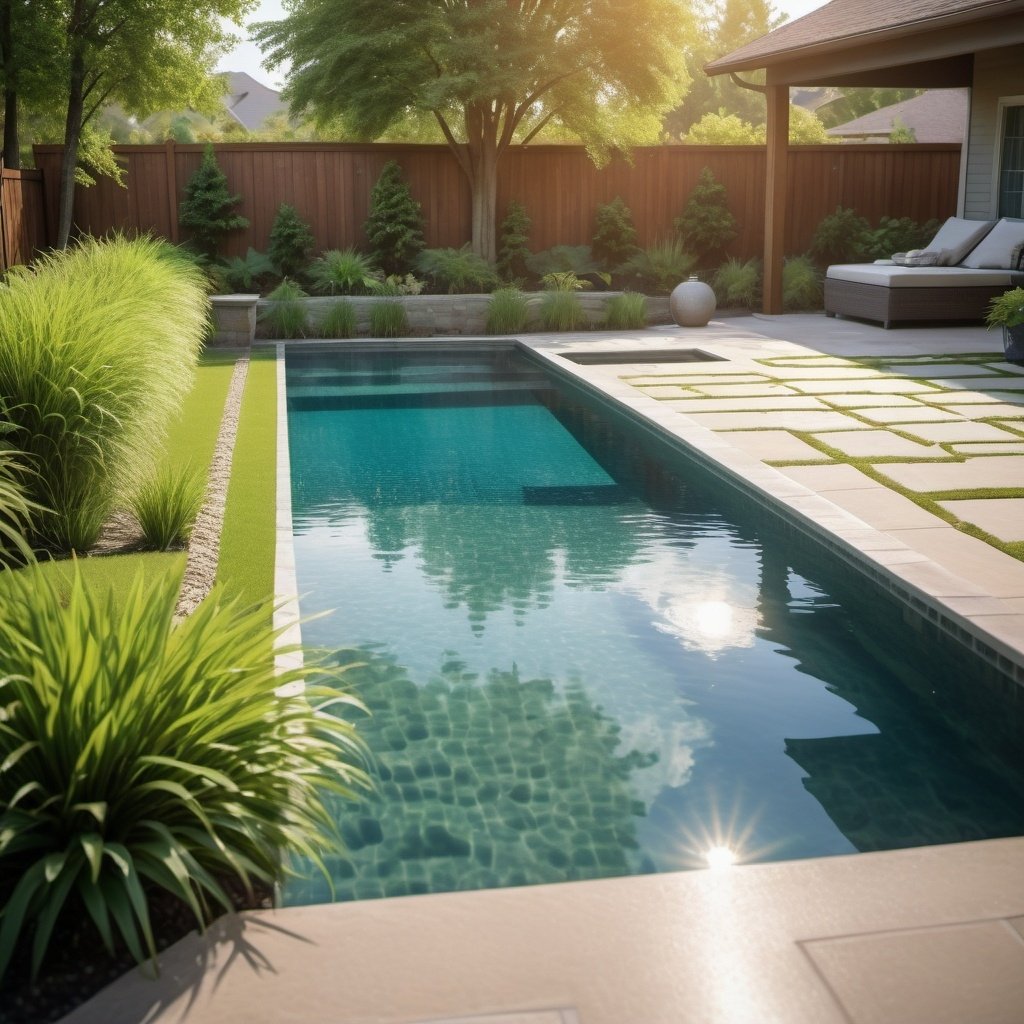
Overview of Vinyl Pool
Vinyl liner pools typically last 5 to 10 years before needing a liner replacement. While the structure itself can last longer, the need for replacement can add significant costs over time.
Overview of Fibreglass Pool
Fibreglass pools are highly durable, often lasting 30 years or more with minimal maintenance. Their robust structure and smooth surface contribute to their longevity and lower overall maintenance costs, which is a key point when considering vinyl pools vs. fibreglass pools.
Which Pool is Right for You
Cost (Initial and Lifetime)
Above-ground pools are generally the better option if you’re counting on a smaller budget. If you’re looking for an in-ground pool, both vinyl and fibreglass pools cost roughly the same after completion. However, if you are looking for long-term value, fibreglass pools may offer a more economical choice over time, reducing the need to replace the pool frequently and the liner on schedule.
Hands-on maintenance
Fibreglass pools require less maintenance compared to vinyl liner pools; homeowners can expect to spend less time and money on upkeep, making it an economical choice for the long term. This highlights the advantages and disadvantages of fibreglass versus other types of pools.
Chemicals and electrical energy
Both pool types require chemical balancing, but fibreglass pools generally have lower chemical usage due to their smooth surfaces and reduced algae growth. The pool will also use less chemicals overall, making it an efficient option. In terms of energy consumption, they also tend to be more efficient, leading to lower utility bills and emphasising the benefits and drawbacks of different pool types.
Climate and environmental factors
In colder climates, fibreglass pools can be a better choice due to their durability and resistance to cracking, while Vinyl may be more susceptible to damage from freezing temperatures, which can cause wrinkles or other issues, especially for those who have in-ground pools.
Aesthetic Preferences
In colder climates, fibreglass pools can be a better choice due to their durability and resistance to cracking. Vinyl liners may be more susceptible to damage from freezing temperatures and dog claws.
To avoid design or placement mistakes, this detailed breakdown of backyard suitability for fibreglass pools clarifies the factors that matter most.
Conclusion
Choosing between these pools ultimately depends on individual preferences, budget, and long-term goals, including whether you want to customise your pool. The cost of the pool should be weighed carefully.
While one is best for those seeking durability, low maintenance, and a sleek appearance, the other is ideal for homeowners who plan to stay long-term and want a pool that requires minimal upkeep.
Vinyl is suitable for those on a budget who desire customisation and flexibility in design. Vinyl liner pools also require more frequent maintenance. They are a good choice for homeowners who may not stay in their current home for long or who enjoy DIY projects, especially when trying to decide between these two choices, which may require you to repair the linear.
Remember, whether vinyl or fibreglass, investing in a pool is a significant decision that requires careful consideration. Take the time to research both options thoroughly. We recommend hiring a professional, such as our team at Plunge Pools Sunshine Coast, to make a choice that aligns with your long-term goals and budget and can avoid pitfalls.
With the right pool, you can create a backyard oasis that brings joy and relaxation for years to come, ensuring that the pool walls and water chemistry remain pristine.
Before locking deposits, revisit our complete guide to fibreglass pools to align budget, maintenance, and design with your long-term goals.
FAQ
Is fibreglass pool better than vinyl?
Yes, fiberglass pools are often considered better than vinyl liner pools due to their durability, lower maintenance requirements, and longer lifespan. While they typically cost more, they offer a smoother surface that resists algae growth and requires fewer chemicals. In contrast, vinyl liner pools can be more affordable upfront but need replacements every 5 to 10 years, which can add to long-term costs.
What is the disadvantage of a fibreglass pool?
The main disadvantages include their higher upfront cost and limited customisation options since they are manufactured in specific moulds. Additionally, repairs can be challenging if the fibreglass shell is damaged, as matching the gel coat finish can be difficult, especially with inground pools.
Which type of swimming pool is best
The best choice of swimming pool depends on individual needs. Fibreglass pools are ideal for those seeking low maintenance, and durability is a significant factor when trying to decide between a vinyl pool and a fibreglass pool. Vinyl liner pools are better for budget-conscious homeowners who want customisation options but should be prepared for replacements every 5 to 10 years.
How Long Do Vinyl Liner Pools Last?
A vinyl liner pool may typically last 5 to 10 years and need to be replaced every decade or so. The lifespan depends on factors such as maintenance, usage, and environmental conditions, which significantly affect the lifetime of the pool. Homeowners should expect to change the liner within this timeframe, with replacement costs ranging from $3,000 to $5,000, often covered by a liner warranty. Proper care can help extend the liner’s life.
Can You Tile A Fibreglass Pool?
Yes, you can tile a fibreglass pool. Check out our latest articles about fibreglass pool tiling.

